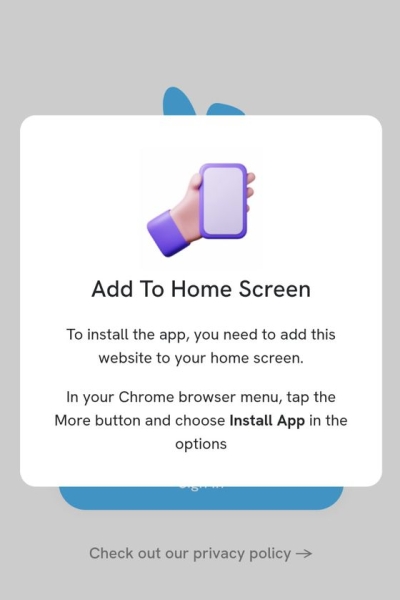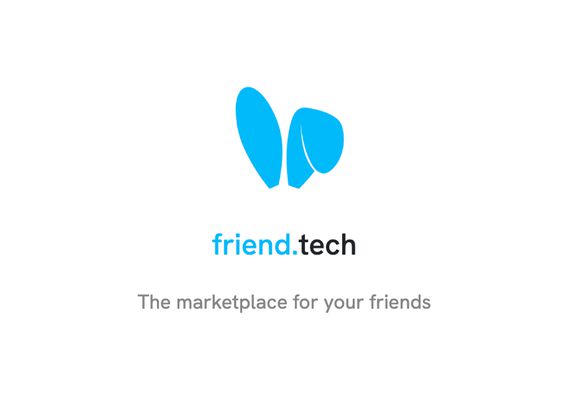- Friend.tech’s invite-only beta launched on Thursday and has done 4,400 ETH (about $8.1 million) in trading volume.
- Questions have been raised regarding the project’s founders, its roadmap and its data privacy.
Over the past 24 hours, crypto Twitter has found a new Web3 social app to obsess over.
On Thursday afternoon, friend.tech, a decentralized platform that calls itself “the marketplace for your friends” opened its invite-only beta test. The app essentially allows users to tokenize their social network and is built on Base, crypto exchange Coinbase’s new layer 2 network.
According to a , senior staff software engineer at Coinbase, friend.tech users create a profile to sell “shares” of themself to their followers. At this time, buying someone’s share grants owners the ability to exchange private messages with them.
The platform is courting influencers who already have large Twitter followings, including influencers Jordan Fish, commonly known as Cobie, and pseudonymous trader Hsaka Trades. Yesterday afternoon, Hsaka Trades that the platform would “speedrun into becoming a Cameo type platform for [Crypto Twitter],” allowing users to collect shares for privileges such as sending a tweet from an influencer’s account.
Although the application is nascent, early metrics show its rapid adoption. According to data from Dune analytics, the application has facilitated over 126,000 transactions, and done 4,400 ETH in trading volume since its launch, over $8.1 million. Additional Dune data shows that it outpaced NFT marketplace OpenSea’s trading volume yesterday, doing nearly double the volume of the leading NFT marketplace.
Friend.tech is also taking Base by storm. Early Friday morning, the network reached 136,000 daily active users – overtaking layer 2 network Arbitrum – much of which is attributed to friend.tech users.
“It’s exciting to see apps like friend.tech bring a new spin on social media to Base,” Cohler told CoinDesk. “I think innovation and decentralization in that space is critical, and I’m definitely curious to see what new features friend.tech will roll out in the future.”
That popularity comes with risks. On its first day, the from the inflow of users as more and more influencers signed up for the platform and many users about and the
Although friend.tech has experienced exponential growth in the 24 hours since its launch, there are some red flags regarding its origin story, its roadmap and its data privacy.
Where did friend.tech come from?
Cohler’s tweet cited pseudonymous developer Racer as the builder behind friend.tech. He Racer previously created TweetDAO, a decentralized autonomous organization that granted use of its Twitter account by holding a “TweetDAO Egg,” its native non-fungible token (NFT).
“The project went viral before devolving,” said Cohler. “It was one of the first forays into decentralized social media.”
Tweet DAO’s main and the website linked to from their OpenSea page is also gone. However, another website connected to the DAO is still live, prompting users to connect their wallets to tweet from that has just a few posts from August 2022.
After the hype surrounding TweetDAO faded, Racer returned with another decentralized social platform. Alongside pseudonymous co-founder Shrimp or , the two developers created Stealcam, a Web3 social platform that allows users to mint images as NFTs, and “steal” them (really, buy them) for ETH.
The catch? The images weren’t visible until purchase.
But in May, the developers decided to rebrand Stealcam to friend.tech, in order to grow its audience among Web3 influencers and creators who want to monetize their content. According to Decrypt, creator earnings in Stealcam had severely dropped off, with leading influencers seeing little returns on their once flourishing content.
Shrimp and Racer told Decrypt that friend.tech was set to launch in “two to four weeks.” They also noted that the platform would deploy on Arbitrum and pointed users to follow @tryfriendtech on Twitter, an account that no longer exists.
Nearly three months later and built on Base, friend.tech has arrived.
You’re selling your shares, are you selling your data?
Crypto influencers flocking to friend.tech are already seeing returns on their shares. But some have raised concerns about how the platform’s pricing model works as well as its data privacy.
Laurence Day, decentralized finance expert and advisor at protocol Euler Finance, with a share pricing model for friend.tech. According to the model, it’s a simple supply and demand structure. As a user sells more shares, its buy price increases according to a .
Andy Chorlian, founder of shuttered fractionalized NFT trading platform Tessera, joined the application Thursday.
“Never knew friendship was so valuable,” said , sharing his profile valuation of 47.4 ETH, nearly $88,000. He that the number was, in fact, a glitch.
Chorlian told CoinDesk that since joining, he’s raked in almost $1,000 in earnings.
“The team there just knows how to make things that [Crypto Twitter] will enjoy,” said Chorlian. “And I have also made like 0.5 ETH, which is honestly insane considering I have just sh*tposted about the app for a bit.”
But beyond buying and selling shares, have expressed concern about how their data would be captured and stored on friend.tech.
The friend.tech desktop site currently directs users to use their mobile device to download the application. The sparse site has very little information on the project, with no information about the roadmap, founders or any sort of whitepaper about the project – all things that most reputable projects would want to have on launch.
There is, however, a call to action that prompts users to read its privacy policy.
But upon clicking on the link, a pop-up sadly tells users that it’s “Coming soon!”
There is also no ability to read the privacy policy on mobile before installing the app from friends.tech. On mobile, the site also forces users to install the app to their home screen, demanding some of the most precious phone real estate.

The lack of any privacy policy should be concerning to users who have no idea where their data may be going, or what it’s going towards.
Overall if you’re considering joining friend.tech, a post from user DefiIgnas sums up the precautions you should take:
Friend.tech’s future
Anytime a new Web3 application touts large returns and community engagement, it’s hard for influencers to stay away. But it’s also crucial to analyze the origins of a project, and understand what its goals are down the line.
Friend.tech is unclear on both of those fronts, which should make users question the long-term viability of sinking money into a half-baked project. From the founders pivoting from two previously failed projects, to a lack of transparency over data usage, users must take into account the potential risks they encounter as the platform continues to scale.
Friend.tech does allow users to cash out their in-app profits. It has a “withdraw ETH” button, allowing creators to send crypto back to their wallets. It might be one of the most reassuring features of the application so far.
Users have noticed a grayed-out icon in the corner of the app, speculating that the project will soon airdrop a native token to its users. But friend.tech has said nothing about an upcoming token and as mentioned, it lacks any roadmap or whitepaper. It’s not safe to assume they’ll follow through with this.
“Do your own research” applies to Web3 the same way it does to the greater crypto industry. Friend.tech’s genesis, mission and lack of roadmap all raise red flags, and must be critically surveyed as it continues to scale.
With a slogan that reads “the marketplace for friends,” the application may not be so friendly after all.
UPDATE (Aug 11 19:54 UTC): Clarifies details around Andy Chorlian’s post on friend.tech.
Edited by Toby Leah Bochan.
